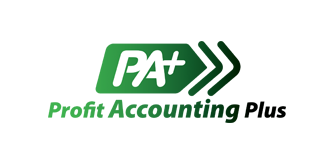Managing cash flow is the lifeblood of every small business. Your work may reward you in ways that aren’t about money at all, but if the cash flowing in doesn’t exceed the cash flowing out, you’ll probably be in trouble before long.
These 12 ways to improve cash flow can help you encourage incoming payments, delay outlays of cash and stay on top of everything in between–like payments, late fees, and billing cycles.
1. Invoice immediately. Don’t wait until next week or next month. If you wait to invoice your clients, your creditors may think they can wait, too.
2. Use electronic billing. It’s fast, and customers are likely to respond more quickly when they can pay instantly. Your deposits can be deposited directly to your account and everyone saves on the cost of paper and stamps. Freshbooks and WePay are two online billing programs designed for small business owners.
3. Get it in writing. Set clear payment terms and expectations in your initial customer agreements. Spell out your terms on every invoice:
4. Include a specific due date. “Due upon receipt” can be ambiguous, while “payment due within 30 days of the bill date” clearly communicates your expectations.
5. Institute late fees. Without them, your customers may put off payment until a time that’s convenient for them but not for you.
6. Offer positive incentives for early payment. Give customers a good reason to pay sooner than they normally would. An example might be a 1-2% discount for payments received within two weeks of the bill date.
7. Sell your invoices.If your need for payment is especially urgent, you can sell your invoices for work already done to a factoring company. In exchange for a small fee, they’ll pay 90-99% of your original invoice amount upfront. This may be a good option if you typically have to wait 30, 60 or 90 days for payment of your invoices.
8. Slow down on bills. Hold off on paying bills until they’re due. If you’re presented with a worthwhile incentive for early payment, by all means, take advantage of it. Otherwise, set your target for a day or two before the due date (just to make sure your payment arrives on time and you don’t incur late fees). If you pay electronically, you can schedule in advance and with precision.
9. Periodic payments.Take advantage of periodic payment programs that are fee-free. For instance, small businesses with workers’ compensation coverage can pay their premiums every time their payroll is run. Payments are based on actual payroll, eliminating the need for a large down payment, and carry no installment charges.
10. Monitor your cash flow status on a weekly basis. Check off what’s been paid, what’s coming due and what’s late. Send reminder notices as necessary, and don’t forget to tack on your late fee.
11.Get a CPA if you don’t already have one. A CPA can help guide you toward your financial goals and offer corrective action should you begin to veer off course. Taxes, of course, are part of the equation and ever-changing, making the aid of a professional essential. A CPA can help ensure you’re taking best advantage of the deductions that can benefit your business and help improve your cash flow.
12. A line of credit. If you occasionally meet up with cash flow problems, a line of credit with a bank or credit union can be helpful to tap into as needed.![]()
